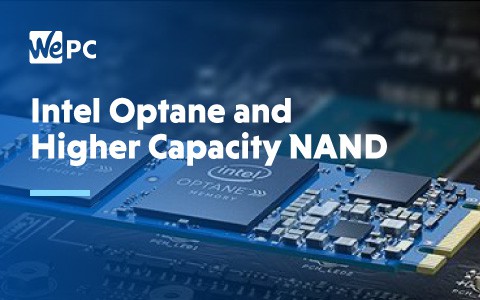Intel made a series of big announcements last week at the Memory and Storage Day 2019 in Seoul. These announcements were concerning its Optane persistent storage and NAND flash capacity.
What is Optane?
Optane is a brand new form of non-volatile memory that Intel has developed. It has the capacity of a solid-state drive (SSD) but with speeds on par with DRAM. This product sits somewhere between memory and storage, acting as a fast cache.
Intel’s newly announced generation of Optane memory has been given the codename “Alder Stream”. It’s rumored to have a 50x lower failure rate than 3D NAND and the transfers-per-second rate has tripled compared to the current generation of Optane available on the market.
Optane has only been available for second-generation Intel Xeon Scalable processors but now, this will be available on high-end workstations which will mean it runs on Core i9 and Xeon CPUs.
Optane currently runs in three modes. There’s the App Direct mode, which is used as persistent storage. Then there’s the Memory Mode, which is when it functions as DRAM and the Mixed Mode where portions of the memory are used in either case. In the first mode, it will boost the speed of disk writes.
When compared to DRAM memory sticks that plug directly into the motherboard, the typical ones cost a small fortune. However, an Optane 512GB stick has an $8000 price tag attached to it though.
Quad Level Cells In Production
Intel also announced a new 96-layer quad-level cell (QLC) drive which is due to go into production sometime this quarter, with the aim to become available next year. QLC drives have four storage bits per cell, which is different from most SSDs which have three bits.
However, the downside to QLC is that they tend to have very low lifespans, typically of just 1,000 writes (compared to 3,000 to 5,000 writes for a triple-level cell).
Intel is also bringing Penta-level cell (PLC), with five bits per cell, which it aims to bring out next year too.
Optane looks to be a huge competitive advantage for Intel where others on the market may struggle to come up with an appropriate response. AMD may lead the way currently but I’m sure they could pull something out of the bag in response to Intel’s recent efforts to claw back market share.

